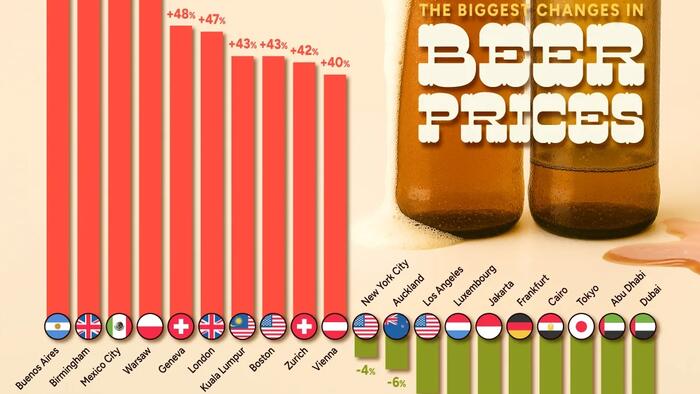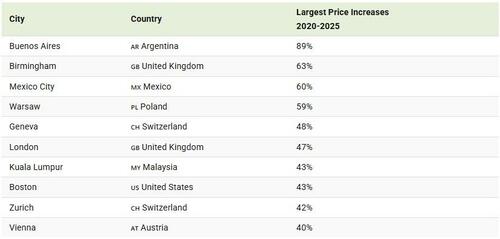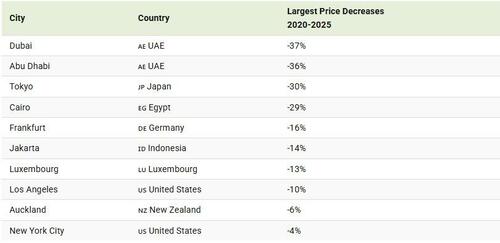


In Boston, the price of beer has shot up 43% since 2020, the fastest jump in America.
Not only that, beer inflation in Boston is the eighth-highest worldwide, driven by higher ingredient and materials costs.
This trend has been seen in many big cities globally, surpassing the rate of inflation.
This graphic, via Visual Capitalist's Dorothy Neufeld, shows the cities with the steepest beer price increases and decreases in the last five years, based on data from Deutsche Bank.
Below, we show cities with the highest beer price inflation. Figures represent the nominal change in an average price of a 0.5L bottle of domestic beer since 2020.
In Argentina’s capital, beer has jumped an eye-watering 89% since 2020, costing $2.23 on average in 2025.
Meanwhile, European cities account for six of the 10 largest price increases, with Birmingham, UK leading at a 63% surge. Warsaw, Poland follows closely with a 59% jump, fueled by higher excise taxes and persistent inflation.
Mexico City has also faced mounting price pressures. In 2022, Grupo Modelo raised prices after global beer production costs spiked by an average of 62% over the prior two years. Added to this, rising tourism and an influx of digital nomads have further driven prices upward.
In contrast, here are the cities with the largest drop in beer prices:
Beer prices have sunk the most in Dubai (-37%) amid easing liquor laws, which previously put a 30% tax on alcohol sales.
In Tokyo, beer has also become increasingly affordable as the yen stands at 30-year lows to the U.S. dollar and several other major currencies. As a result, prices are now 30% cheaper than in 2020, where domestic beer can cost around $2.14.
To learn more about this topic, check out this graphic on the top countries by beer consumption in the world.


